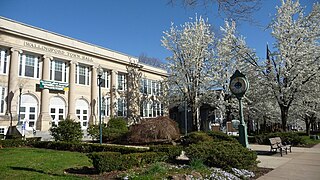
Wallingford is a town in New Haven County, Connecticut, United States, centrally located between New Haven and Hartford, and Boston and New York City. The population was 44,396 at the 2020 census. The community was named after Wallingford, in England.

Meriden is a city in New Haven County, Connecticut, located halfway between the regional cities of New Haven and Hartford. In 2020, the population of the city was 60,850.
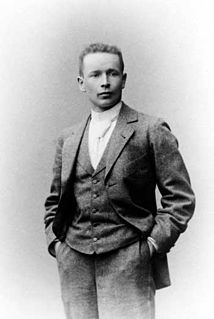
Gottlieb Eliel Saarinen was a Finnish-American architect known for his work with art nouveau buildings in the early years of the 20th century. He was also the father of famed architect Eero Saarinen.

Lurelle Van Arsdale Guild was an architect, industrial designer, and interior designer. After studying painting at Syracuse University, Guild worked as an illustrator and writer. He started Lurelle Guild Associates in 1928. In 1944, Guild was a founding member of the Society of Industrial Designers in New York..
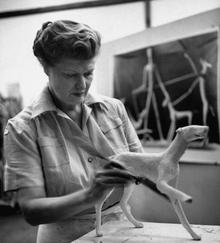
Mary Callery was an American artist known for her Modern and Abstract Expressionist sculpture. She was part of the New York School art movement of the 1940s, 1950s and 1960s.
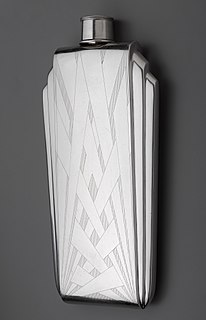
The Napier Company is an American jewelry manufacturing company, and was one of the first modern corporations in the United States. The company is also known historically as a cutting-edge silver object manufacturer.
Parker Bros was an American firearms firm, mostly producing shotguns from 1867 to 1942. During these years, approximately 242,000 guns were produced in various grades, and are widely considered the finest and most collectible American shotgun.

The Bradley & Hubbard Manufacturing Company (1852–1940) was formed in Meriden, Connecticut, and over the years produced Art Brass tables, call bells, candlestick holders, clocks, match safes, lamps, architectural grilles, railings, etc. Overall the company patented 238 designs and mechanical devices. "By the 1890s, the Bradley and Hubbard name was synonymous with high quality and artistic merit," said Richard E. Stamm for the Smithsonian Institution, which has an extensive collection of Bradley and Hubbard manufactured design objects in its collection.

The Manning, Bowman & Co. (1849-1945) was formed in Meriden, Connecticut, and over the years produced granite iron and pearl agate ware, electro-silver and nickel-plated ware, britannia and planished goods.
The International Silver Company , also known as the ISC, was formed in Meriden, Connecticut as a corporation banding together many existing silver companies in the immediate area and beyond.
The Miller Company Collection of Abstract Art was formed in Meriden, Connecticut as part of the Miller Company. The collection was formed by then-CEO Burton Tremaine Sr. and his wife, Miller Co. art director Emily Hall Tremaine in c. 1945. Works from the collection were featured in the Painting toward architecture exhibition, putting forth Post-WWII art, design and architecture crossovers, originating at the Wadsworth Atheneum in Hartford, CT, and travelling to 28 additional venues in 1947–52 across the United States.
The Charles Parker Company was formed in Meriden, Connecticut by Charles Parker, and over the years manufactured products including metalware, Art Brass, hardware, lamps, spectacles, and piano stools. Also related to the company were others founded by Charles Parker: including Parker Brothers, Meriden Curtain Fixture Co., and Parker & Whipple Co. clock manufacturers.

Simpson, Hall, Miller & Co. was a cutlery and silver hollowware manufacturer in Wallingford, Connecticut, founded in 1866. By c. 1895, the company operated large factories in Wallingford and Montreal, Canada.
R. Wallace & Sons was formed in Wallingford, Connecticut and incorporated in 1879. As of 1893, this company manufactured silver and plated ware and cutlery and had about 600 employees.
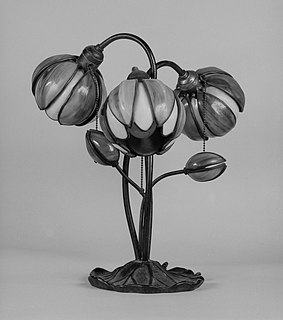
The Eydam and Handel Company, or Adolph Eydam and Philip Handel Company, was formed in 1885, until partnership broke up in 1892 when Eydam moved to rival company of C. F. Monroe. It was formed in Meriden, Connecticut, and over the years produced lamps and glass designs. The company was incorporated in 1903. As of c. 1911, P. J. Handel was president and treasurer of the business. In Meriden Illustrated, "[The company has] obtained [a] national reputation for the artistic and the high quality of their product. A number of patents are controlled which makes their business a very successful one. There is a force of 125 people skilled in the various branches and steadily engaged." Also at this time, the Handel Company maintained a showroom in New York City at the corner of West Broadway and Murray St. with dedicated sales agents for the entire United States. The production location was in Meriden on East Main Street, just east of Broad Street.
In 1872, the Derby Silver Company began production in Derby, CT. Over the years, the company made bathroom-related items, clocks, tableware and flatware, tea sets, candlesticks, fruit baskets, dishes, and more object types made of silver and silver plate. The Derby Silver Company operated showrooms in New York, Chicago, and San Francisco. As of 1893, the President and Manager of the company was Watson J. Miller. Wesley L. Clark was the Secretary and Treasurer.

The Wilcox Silver Plate Co. was formed in Meriden, Connecticut. From 1865 to 1867, it was known as the Wilcox Brittania Co. In 1898, the company was acquired by the International Silver Company, headquartered in Meriden. After the acquisition, the Wilcox Silver Plate Co. brand continued until at least c. 1980.
Edward Miller & Co. (1844-1924) was formed in Meriden, Connecticut, and is primarily known as a historical manufacturer of lamps. The company also made brass kettles and oil heaters. In 1866, the corporation was formed with capital of USD$200,000. Its earlier beginning included being started by Horatio Howard. The following year the business was sold to Edward Miller.

Edward Francis Rook was an American Impressionist landscape and marine painter, and a member of the art colony at Old Lyme, Connecticut.
Elizur G. Webster was an American silversmith and the founder of E. G. Webster & Son, a manufacturer of silverware.












